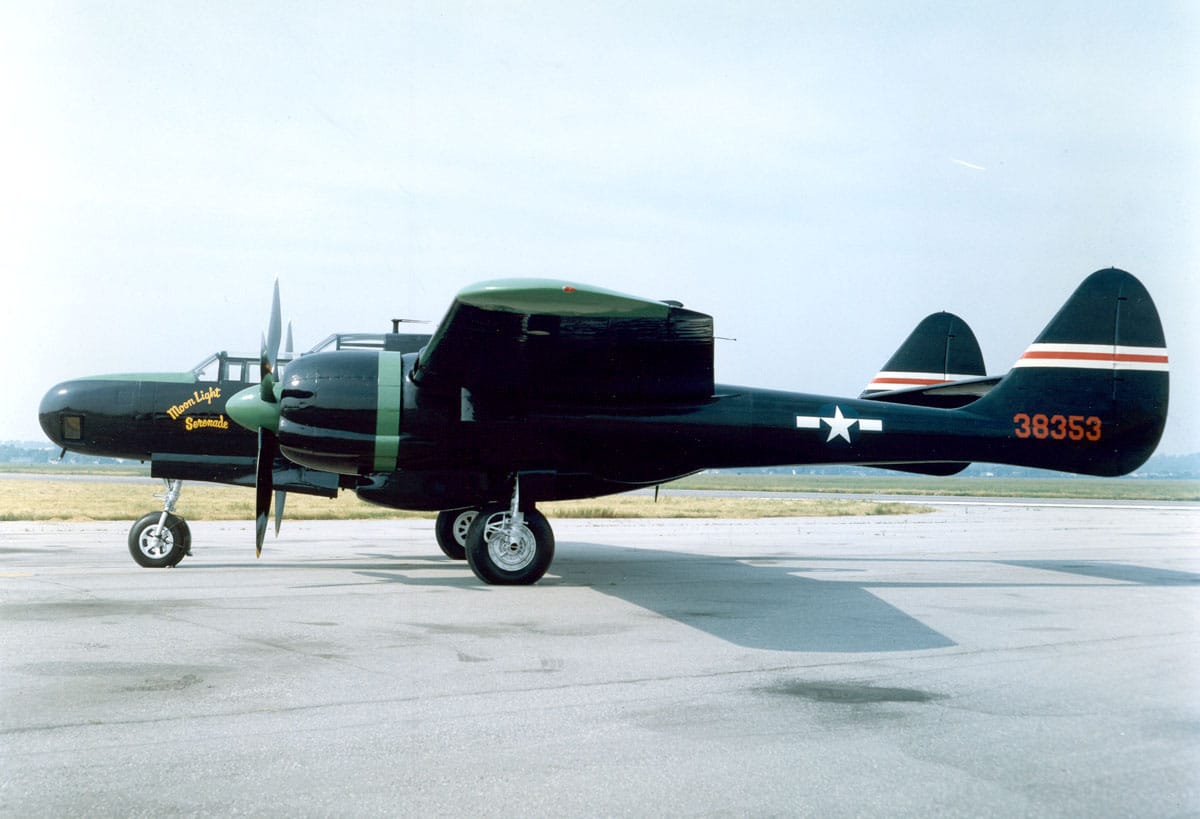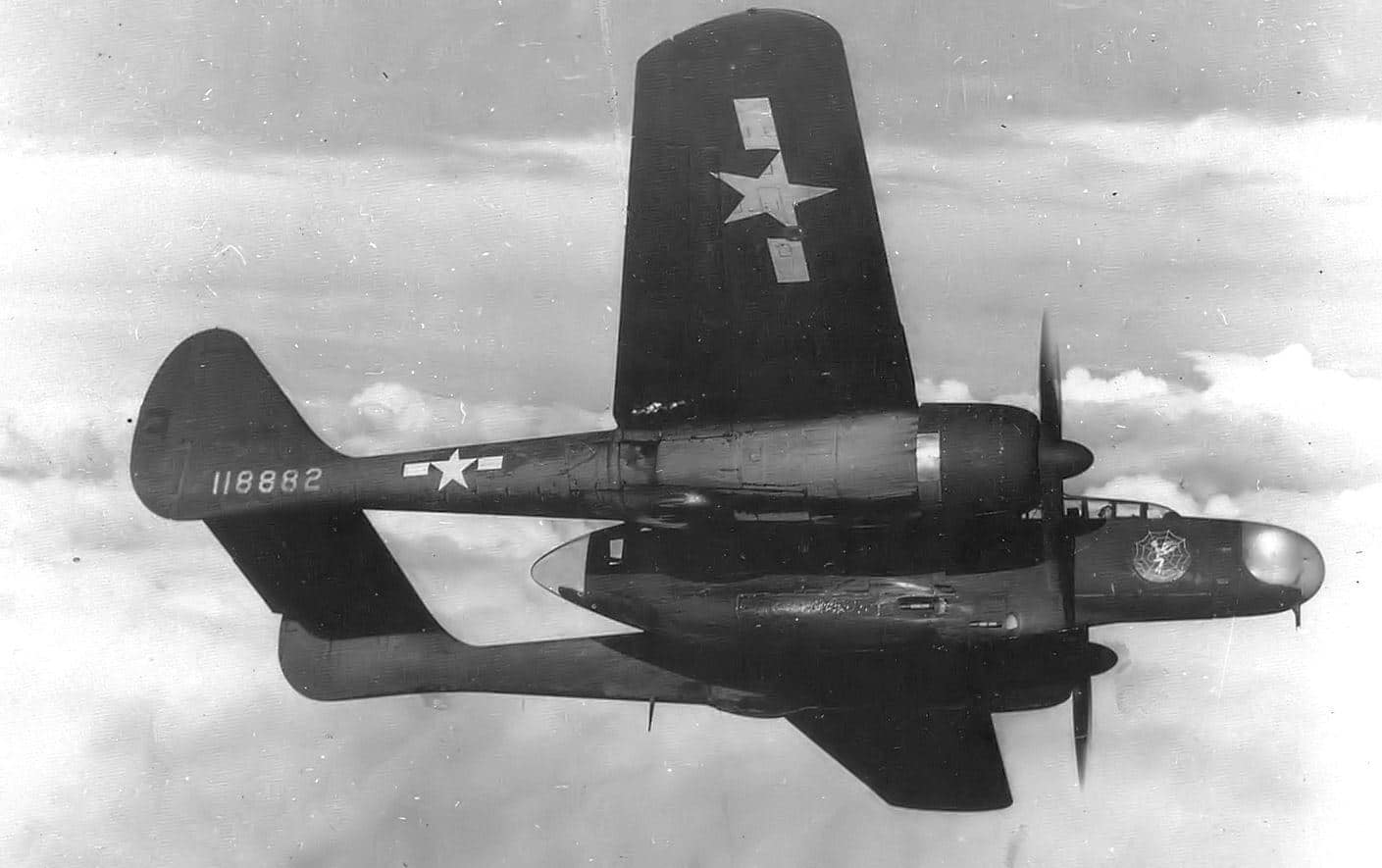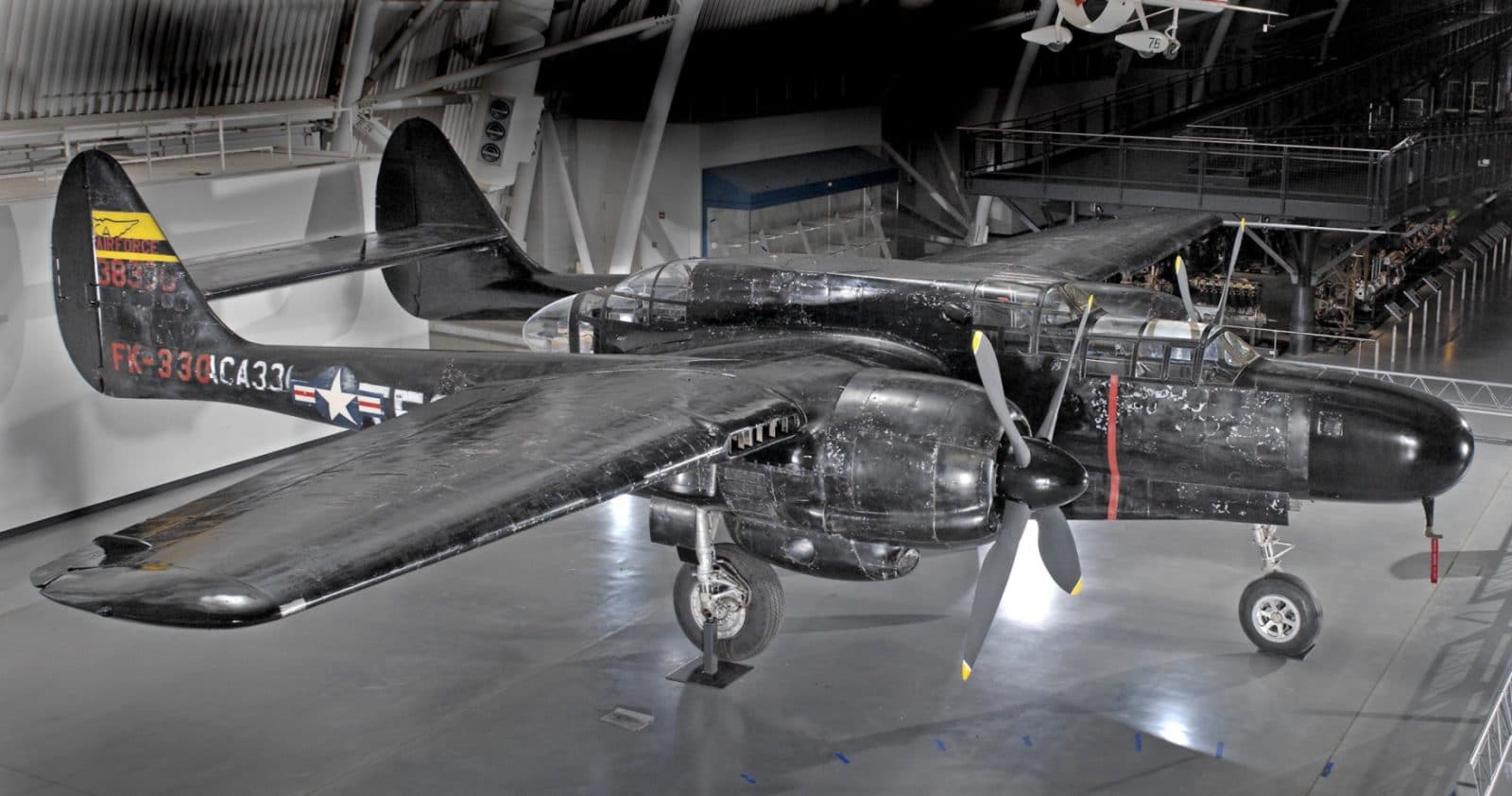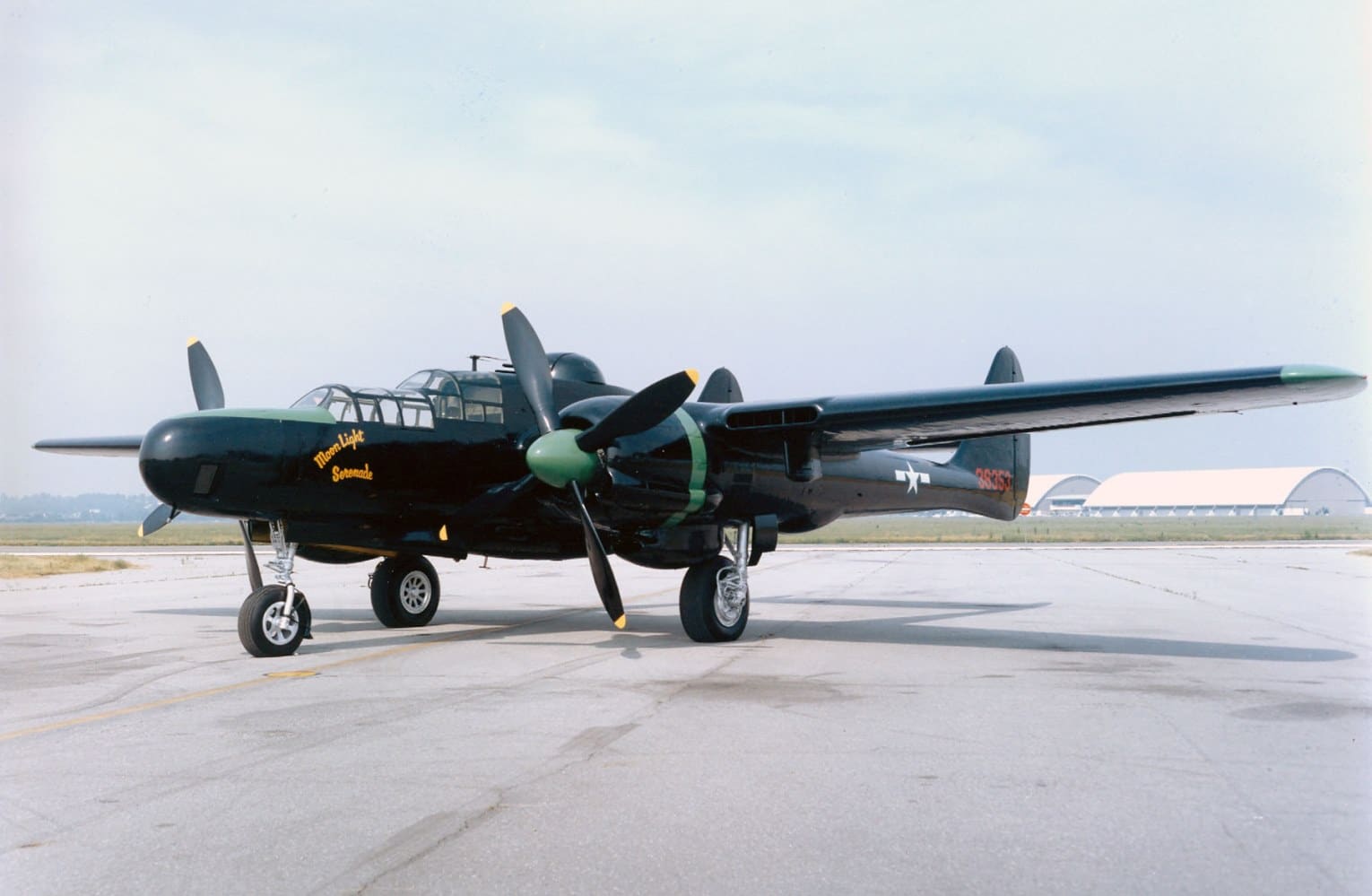Targets of Opportunity
During the Battle of the Bulge in December of 1944, P-61s assigned to the 422nd and 425th NFSs flew cover over encircled Bastogne. With precious little business as night fighters by that time, the heavily-armed Black Widows were pressed into service in the ground attack role. Those four 20 millimeter cannons were capable of making quick work of German locomotives, rolling stock, trucks, and lightly armored vehicles.

Too Late to the Party
Black Widows were dispatched to the Mediterranean Theater (MTO) and the China-Burma-India Theater (CBI) but arrived too late in the hostilities to make an impact before the end of the war. Black Widows scored no aerial victories in either the MTO or the CBI.

Effective Even Without the Fanfare
In the Pacific Theater (PTO) Black Widows began flying operational missions from Guadalcanal in June of 1944. Japanese opposition was scarce even as the NFS outfits moved closer to Japan as the war progressed. Several of the PTO NFSs completed their tours with no victories recorded by the conclusion of the war. Only one PTO Black Widow crew achieved ace status. Overall P-61s downed 129 aircraft during the war.

The Final Victory…Sort Of
A P-61B of the 548th NFS, named Lady in the Dark, was unofficially credited on the night of August 14th 1945 with the final Allied air victory before the war ended. Ironically the victory was achieved without a single shot being fired. The opponent, a Nakajima Ki-44 Tojo fighter, went out of control while trying to escape from the Lady.

War-Winning Has Its Downsides
After World War II ended, P-61s continued to serve in Europe and the Pacific in small numbers. Many of the NFSs were inactivated and their aircraft sent to reclamation in Germany and in the Philippines. The few remaining P-61s were redesignated F-61 in 1948. The few F-15A Reporter reconnaissance aircraft were redesignated RF-61C.

Research That Still Applies
Black Widows took part in initial American ejection seat testing. Dummies were used for the first several trials, but on April 17th 1946 a successful human ejection was made from a P-61B. P-61s also did the heavy lifting for the Thunderstorm Project, a series of weather research flights flown into and out of thunderstorms between 1946 and 1949. The data captured during these flights us still valid and used today.

Replaced By Twin Mustangs
North American F-82 Twin Mustangs replaced P-61s in most Air Defense Command (ADC) NFSs beginning in 1948. The last few operational Black Widows, those flown by the 68th Fighter Squadron of the 347th Fighter Group, rotated home from Japan during May of 1950. The Korean War began the next month. The last of the 706 P-61s built were retired from operational use in 1954.


My dad flew B17s with 381 BG. June 6 44 to Oct 44.
But my wife’s dad was USAAC weatherman / observer stationed in China 44-45. He flew in P61s daily to recon and report Allied bridge bombing results. His seat was in the rear facing blister designed for the radar operator…but his job replaced radar need. They were young men and almost nightly would tie one on with Chang Fang whiskey then, at 4am roll out of the sack, hungover, grab some chow, man the plane, immediately don oxygen masks and turn oxygen on to clear their heads while rolling down runway. The plane was so powerful that it could virtually rotate to near vertical climb as wheels went up. This left him hanging strapped in his swivel seat facing straight down at the ground…not always a pleasant feeling as the booze from the previous evening caused, uh, nausea. Once (he said) hed not tightened his seat harness fully and as the plane went vertically, he was suspended, face down, out of the seat when nausea went full throttle.
He ripped the oxygen mask off just as the chow…all of it, ejected and splattered all over the perspex blisters inner surface. When they’d reached altitude, leveled off and headed to their observation area, he had to crawl around and scrape breakfast off the blister so he could see below to make his report on the previous night’s bombing runs effectiveness. Aftwr that, he swore off Chang Fang for the durarion.
Picture show Double Trouble, Met pilot on several occasions as he lived in my home town of Grand Rapids Mi.